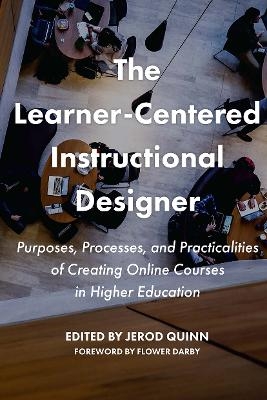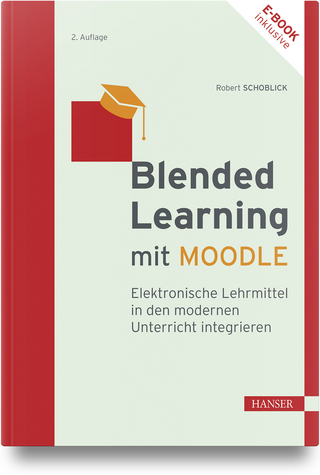
The Learner-Centered Instructional Designer
Stylus Publishing (Verlag)
978-1-64267-041-7 (ISBN)
Jerod Quinn, M.Ed, is an Instructional Designer for the Course Design and Technology department at the University of Missouri, where he works with faculty designing and creating online classes. He has been working as an instructional designer for almost a decade and in higher education for even longer. He has taught online classes in instructional design and face-to-face classes in educational technology. Leaning on his education, online teaching experience, and professional network, he works with faculty to create significant learning experiences online, face-to-face, and blended across disciplines. He’s been a POD Network member for several years and is currently in pursuit of a Ph.D. in Educational Psychology with an emphasis in quantitative research from the University of Missouri.
Foreword—Flower Darby Acknowledgments Introducation. Always Learner Centered—Jerod Quinn Part One. Instructional Design in Academia. A Common Core with Different Approaches 1. Concierge Model. The Full-Service Guide—Rayne Vieger 2. Consultation Model. At the End of the Day—Jerod Quinn Part Two. Building Faculty Trust. You Can Trust Me, I’m a Professional 3. Building Trust. Creating a Climate of Trust, Care, and Collaboration Among Instructional Designers and Faculty—Christopher Grabau 4. Having Boundaries. I’m Not Your Personal Assistant—Olena Zhadko 5. Faculty Perspectives. A (Love?. Letter to Instructional Designers—Tom Warhover 6. Grounded in Research. Be Good, or at Least Evidence Based—Johanna Inman Part Three. Frameworks That Touch Everything. The Lenses We Work With 7. Learning Online. The Internet Should be Used for More Than Just Do-It-Yourself Videos—Josie G. Baudier 8. Universal Design for Learning. Everybody Gets to Learn—Carl S. Moore 9. Decentralizing Whiteness. Where Do We Start?—German E. Vargas Ramos 10. Motivation for Learning. If We Build it, Will They Come?—Traci Stromie 11. Metacognition and Reflection. How We Know What We Know and Don’t Know—Kathryn E. Linder 12. Leveraging Technology. It’s New and Shiny, So It Must Be Good for Learning—Bonni Stachowiak Part Four. Components of Online Classes. Practical Evergreens 13. Course Structure. Spend Time Engaging With Course Materials, Not Hunting for Them—German E. Vargas Ramos 14. Multimedia. Moving Beyond Passive to Active Learner Engagement—Danilo M.Baylen, Jonathan Gratch, and Linda Haynes 15. Group Work. Online Collaboration Isn’t Always Horrible—Emily Goldstein 16. Synchronous Learning. Good to See You Again—David Wicks and Annie Tremonte 17. Discussion Forums. Our Love-Hate Relationship With Discussion Forums—Shannon Riggs 18. Presence. Online Courses Still Have to Be Taught—Olena Zhadko 19. Remote Instructional Design. The Best We Can—Tammy M. McCoy and Jerod Quinn Conclusion. A Day in the Life—Jerod Quinn Annotated Biographies Editor and Contributors Index
| Erscheinungsdatum | 02.10.2020 |
|---|---|
| Sprache | englisch |
| Maße | 158 x 235 mm |
| Gewicht | 400 g |
| Themenwelt | Schulbuch / Wörterbuch ► Unterrichtsvorbereitung ► Unterrichts-Handreichungen |
| Sozialwissenschaften ► Pädagogik ► Erwachsenenbildung | |
| ISBN-10 | 1-64267-041-3 / 1642670413 |
| ISBN-13 | 978-1-64267-041-7 / 9781642670417 |
| Zustand | Neuware |
| Haben Sie eine Frage zum Produkt? |
aus dem Bereich


